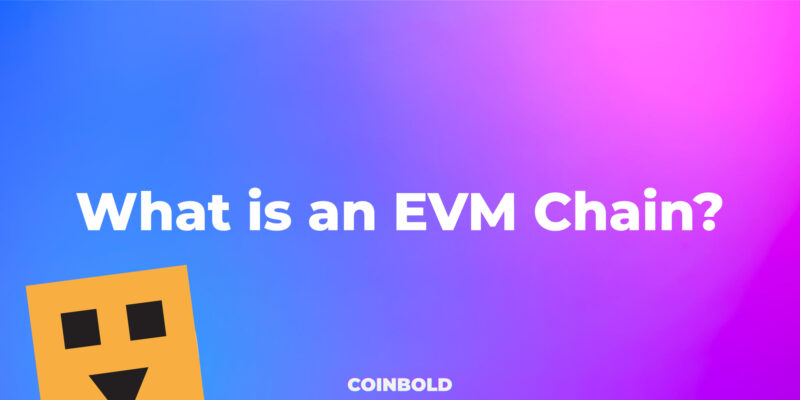An EVM Chain, which stands for Ethereum Virtual Machine Chain, refers to a blockchain network that is fully compatible with the Ethereum Virtual Machine (EVM). This compatibility allows the chain to tap into the extensive and robust ecosystem of Ethereum. Developers can leverage the same tools, programming languages, and frameworks they would use on the Ethereum network to build decentralized applications (dApps) and smart contracts on an EVM Chain.
The significance of EVM compatibility extends beyond the development process. It also greatly benefits users. Wallets and user interfaces across EVM-compatible chains often exhibit consistent behavior, making it easier for users to navigate and interact with various decentralized platforms. This standardization enhances the user experience, ensuring a smooth and familiar interface regardless of the specific EVM Chain being used.
As the adoption of smart contracts and dApps continues to expand, the standardization provided by EVM compatibility becomes increasingly crucial. It offers a seamless and secure environment for both developers and users, encouraging innovation and facilitating the growth of decentralized applications on diverse EVM Chains.

What is the Ethereum Virtual Machine (EVM)?
The Ethereum Virtual Machine (EVM) serves as the computational powerhouse behind the Ethereum blockchain. It functions as a virtual computer, responsible for executing smart contracts and processing transactions within the Ethereum network. These smart contracts, written in high-level languages like Solidity, are compiled into bytecode, which the EVM interprets and executes.
One of the key features of the EVM is its ability to securely and independently run smart contracts. These contracts range from simple token exchanges to sophisticated decentralized applications (dApps), including governance systems and decentralized exchanges. By enforcing predetermined conditions and rules, the EVM ensures that smart contracts operate in a transparent, immutable, and trustless environment. This enhances security for all participants within the Ethereum network.
The EVM’s role as a virtual computer enables the execution of complex computations and the enforcement of consensus rules, making it a critical component of the Ethereum blockchain. Through its robust design, the EVM enables the creation of a wide range of decentralized applications, fostering innovation and driving the growth of the Ethereum ecosystem.
What are the Popular EVM Blockchains?
Each of these EVM-compatible blockchains offers distinct advantages and features that cater to different needs within the decentralized ecosystem:
- Ethereum: As the original blockchain with an Ethereum Virtual Machine (EVM), Ethereum serves as the foundational framework for web3 applications. It enables the development of decentralized applications (dApps) and decentralized exchanges (DEXs), providing a robust and widely adopted platform for smart contracts.
- BNB Chain: BNB Chain, an EVM-compatible layer 1 blockchain by Binance, stands out for its fast and cost-effective transactions. It has become a favored platform for DeFi projects and decentralized exchanges, offering a thriving ecosystem for users and developers.
- Polygon (MATIC): Operating as a Layer 2 solution for Ethereum, Polygon aims to enhance scalability and transaction efficiency on the Ethereum network. It provides a framework for building scalable dApps and offers interoperability with Ethereum, enabling developers to leverage the benefits of both networks.
- Avalanche: Avalanche is an EVM-based alternative layer 1 blockchain that utilizes a novel consensus mechanism called Snowball. It offers high throughput and low latency, making it attractive for applications that require fast transaction processing. Avalanche provides developers with a reliable and scalable platform for building decentralized applications.
- Optimism, zkSync, and Arbitrum: These are popular Layer 2 solutions built on top of Ethereum that leverage the EVM for applications. They aim to improve scalability and reduce transaction costs on the Ethereum network, enabling faster and more efficient interactions for users.
Each of these EVM-compatible blockchains brings unique strengths to the table, ranging from scalability and low transaction fees to interoperability and novel consensus mechanisms. These advantages cater to different needs within the decentralized ecosystem, providing developers and users with a diverse range of options to choose from.

Total Value Locked on EVM Chains
Understanding the Total Value Locked (TVL) in EVM-compatible chains is essential for gauging the network’s health and level of adoption. As per the latest data from DefiLlama, EVM-based chains collectively secure over $42 billion in assets, making EVM the most trusted smart contract platform in the industry.
Leading the pack in TVL are Ethereum with $21.617 billion, followed by BSC Chain at $5.3 billion, Arbitrum with $1.7 billion, and Avalanche holding $519 million. In contrast, the most prominent non-EVM chain by TVL is Solana, which currently has over $1.5 billion in assets secured. These figures offer a comprehensive view of the current landscape, highlighting the trust and activity levels across various blockchain networks.
Examples of non-EVM Compatible Chains
Several prominent blockchains have successfully implemented smart contracts, but they have done so using their own distinctive programming languages and architectural frameworks, rather than relying on the Ethereum Virtual Machine (EVM). Notable examples include:
- Bitcoin: As a pioneer in blockchain technology, Bitcoin primarily focuses on facilitating secure peer-to-peer transactions and does not support EVM-compatible smart contracts.
- Cardano: Cardano has developed its own smart contract platform called Plutus, operating independently of the EVM. This platform offers unique features and functionalities.
- Solana: Known for its high throughput and low latency, Solana employs its own unique architecture and is not compatible with the EVM.
- Aptos: While not as widely recognized as other blockchains, Aptos operates without EVM compatibility, emphasizing its own set of features and functionalities.
- XRP (Ripple): Designed primarily for fast and cost-effective international money transfers, XRP does not support EVM-compatible smart contracts.
These blockchains have successfully implemented smart contracts using their own programming languages and frameworks, catering to specific use cases and priorities. While they operate independently of the EVM, they contribute to the overall growth and diversity of the blockchain ecosystem.
Conclusion
The Ethereum Virtual Machine (EVM) serves as more than just the foundation of the Ethereum blockchain. It acts as a unifying standard that extends its compatibility to various other networks, such as BNB Chain, Polygon, and Avalanche. This compatibility fosters a seamless experience for both developers and users, simplifying their interactions with smart contracts and decentralized applications (dApps).
The EVM’s significance goes beyond its role as a standard. It has emerged as a trusted operating system for blockchains, with a Total Value Locked (TVL) surpassing $42 billion. EVM-compatible chains have gained prominence as they offer scalability, security, and interoperability within the decentralized ecosystem of applications.
By adhering to the EVM standard, these chains enable developers and users to leverage the benefits of a unified infrastructure, facilitating the growth and widespread adoption of decentralized technologies. As a result, the EVM has become a pivotal component for building resilient and interconnected blockchain networks.







